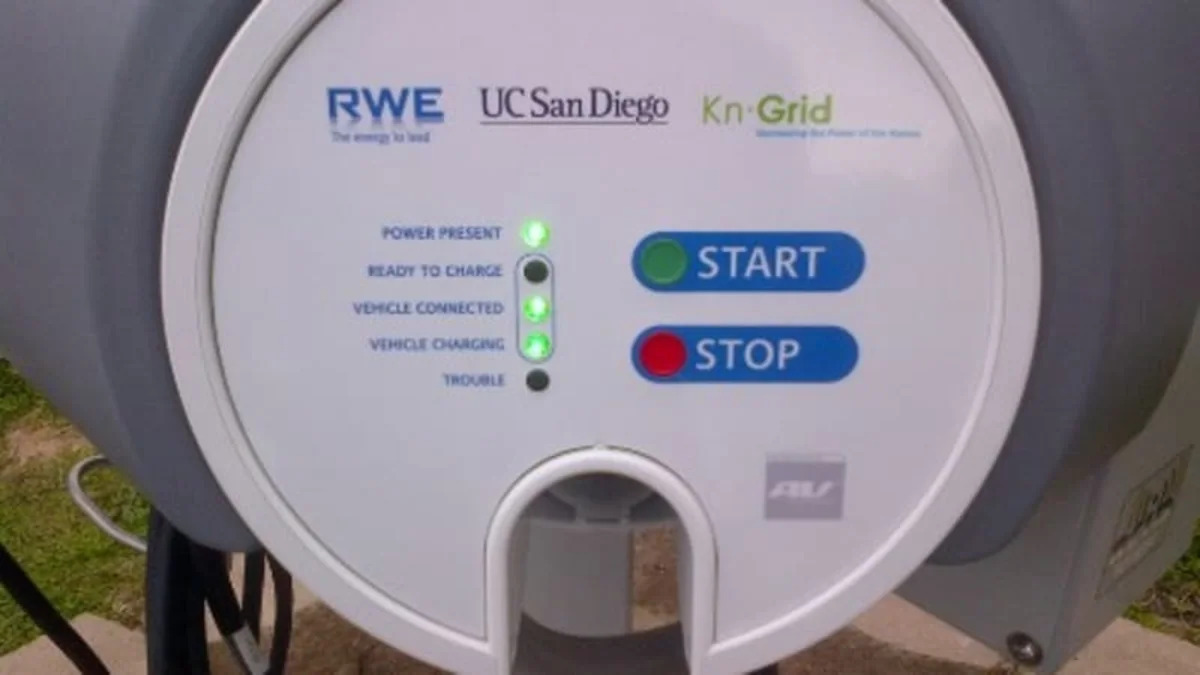The University of California, San Diego already has a healthy number of EV charging stations, but dozens more have been installed recently as part of a three-year pilot project. These new ones are not like the others on campus, see: they're next-gen chargers supplied by German utility company RWE. They're the only model in the world right now certified for the 2017 global charger standard, which means they can communicate with the grid in real time to determine supply and demand. Thanks to this "smart charging" capability, stations can recognize if electricity's needed more elsewhere - the charging process will then be interrupted whenever that's the case.
This project, which was funded by the California Energy Commission, also entails bringing in Daimler's smart electric drive coupes and offering affordable leases to students. The cars were designed to be 100 percent compatible with the new standard and hence can take full advantage of what RWE's chargers can do. UCSD's campus, by the way, is already pretty eco-friendly: in addition to its existing EV chargers, most of its power comes from wind and solar installations.
Pilot project in electromobility with the University of California has been a success for one and a half years
29 charging points with innovative charging management
New project for vehicle-grid integration in the local distribution network
California is a US state that has set itself ambitious environmental targets. As in Germany, one million electric vehicles should be on the roads by 2020; at the moment, there are 132,000. To supply them with environmentally friendly, self-generated green energy, a modern charging management system is required. For this purpose, RWE and Daimler are taking part in a three-year pilot project together with the University of California in San Diego. The goal is to use wind and solar energy generated on campus to charge electric vehicles. Innovative IT technology is also being used.
A smart grid on a small scale
The campus of the University of California at San Diego is a small world unto itself. 45,000 people live and work here. 90 per cent of the energy required is self-produced. For the pilot project, 26 AC-charging points, where Daimler's smart fortwo electric drive can be recharged, were built. Three more charging points offer an innovative quick-charge technology. These charging stations are cutting-edge DC models. DC fast chargers typically provide 100-130 kilometres of range in just 20 minutes of charging.
To integrate the charging stations into the network intelligently, RWE is testing a new form of data communication in accordance with ISO/IEC 15118. "With this new standard, the charging stations recognize when electricity is available and use it for charging," said Norbert Verweyen, managing director of RWE Effizienz. "If the energy is needed elsewhere, the charging process is interrupted." In this way, a smart microgrid has been created.
In addition, the charging process is very convenient. All users can connect their electric vehicle at a charging point by just plugging and charging. The charging station recognizes the vehicle by an ID number and thus enables accurate billing. "In Germany, we see California as being on a parallel sustainability path and projects like this help light the way for all of us," added Verweyen. "It's exciting for RWE to be working in California, with all our partners, to advance this global 'vehicle to grid' communication standard."
Harmoniously integrating electromobility into the network
The high level of convenience is partly the result of a dedicated web portal that the local partner, IT start-up "Kn grid", has developed for the E-smart drivers. Together with Kn grid, another project in which RWE is participating has emerged in addition to the project on the university campus. This project intends to collect data from the network operators on how much electricity is available in the respective network to charge the electric cars. This data serves as an important basis for preventing a large number of electric cars from drawing too much energy from the grid and thus endangering its stability. Dr. Norbert Verweyen is certain: "Both projects provide us with valuable insights on how to integrate electromobility into the power grid more harmoniously and thus move it a big step forward."
This article by Mariella Moon originally ran on Engadget, the definitive guide to this connected life.


Sign in to post
Please sign in to leave a comment.
Continue